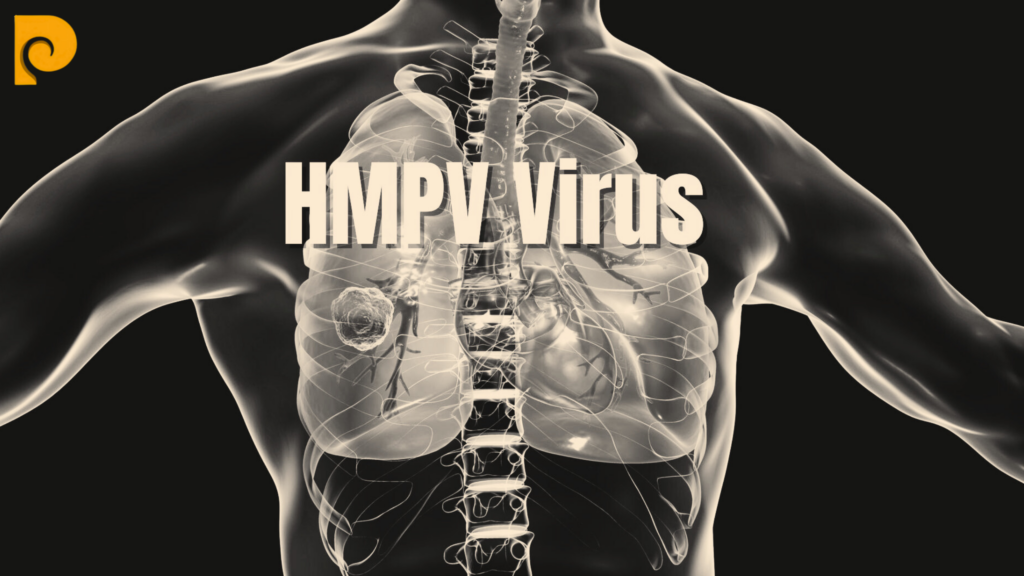Experts Caution, but Stress HMPV Is Not a Major Concern
India has reported a total of 15 confirmed cases of Human Metapneumovirus (HMPV), a respiratory virus similar to COVID-19. Among the cases is a 10-month-old child in Assam, who was diagnosed on Saturday. The child is currently undergoing treatment at the Assam Medical College and Hospital (AMCH) in Dibrugarh and is in stable condition.
This is the first case of HMPV in Assam, and the child had been admitted to the hospital four days ago with cold and flu-like symptoms. The majority of the cases have been reported in Gujarat, with 4 cases, followed by Maharashtra with 3 cases. Karnataka and Tamil Nadu have reported two cases each, while Uttar Pradesh, Rajasthan, Assam, and Bengal each have one case.
In response to the rise in cases, several states have increased vigilance. In Punjab, authorities have advised elderly individuals and children to wear masks, while hospitals in Gujarat are setting up isolation wards. Haryana’s health department has also been instructed to monitor HMPV cases closely.
Rising Concern Among Children
HMPV causes cold and flu-like symptoms, and its most severe impact has been observed in young children, particularly those under 2 years of age. The virus primarily spreads through respiratory droplets from coughing and sneezing, and infected surfaces can also contribute to its transmission.
The Indian government has urged states to enhance monitoring of Influenza-Like Illness (ILI) and Severe Acute Respiratory Infection (SARI) cases and to increase awareness about HMPV. Despite concerns, the government has stated that flu-like viruses are common during the winter months and there is no immediate cause for alarm.
Health Ministry’s Response
On January 4, the government held a Joint Monitoring Group meeting to discuss the increasing cases of HMPV in China and other parts of the world. The Ministry of Health emphasized that the seasonal increase in respiratory illnesses is not unusual, as the cold weather contributes to the spread of viruses like RSV and HMPV. The Ministry further reassured the public that there is no evidence of unusual spikes in respiratory illness cases in India.
ICMR and the Integrated Disease Surveillance Programme (IDSP) are actively monitoring ILI and SARI cases. To strengthen the surveillance system, the ICMR will increase the number of labs testing for HMPV across the country.
Expert Opinions on HMPV
Dr. Randeep Guleria, former director of AIIMS, clarified that HMPV is not a new virus and usually resolves on its own. Antibiotics are not effective against the virus, and patients are advised to stay hydrated, eat nutritious food, and avoid crowded places.
Dr. Shashank Heda, founder of CovidRxExchange, downplayed concerns, explaining that the increase in hospital admissions is not solely due to HMPV. Other viral infections are contributing to the surge, and such viruses typically peak in the winter months and subside after some time.
Q&A with Experts on HMPV
Q1: What is HMPV? A1: HMPV is an RNA virus that primarily causes cold-like symptoms. These include coughing, nasal congestion, sore throat, and wheezing. It is most prevalent during the cold months.
Q2: How is HMPV transmitted? A2: HMPV spreads through respiratory droplets when an infected person coughs or sneezes. It can also be transmitted by touching contaminated surfaces or direct contact with an infected person.
Q3: What are the symptoms of HMPV? A3: Common symptoms include cough, fever, and a sore throat. In more severe cases, it can lead to pneumonia or bronchitis.
Q4: Is HMPV similar to the coronavirus? A4: While both viruses affect the respiratory system, they belong to different families. Both are transmitted via respiratory droplets, and their symptoms can overlap, including fever, cough, and difficulty breathing. Children, the elderly, and those with weakened immune systems are most vulnerable to both viruses.
Q5: Can HMPV spread globally like COVID-19? A5: HMPV is not a new virus, and there is no evidence of it spreading explosively like COVID-19. It has been detected in countries like the Netherlands, the UK, the US, and Australia, but its spread remains contained compared to COVID-19.
Q6: Is there a vaccine or treatment for HMPV? A6: There is no specific antiviral treatment for HMPV, and no vaccine has been developed. Most people recover with rest, hydration, and symptom management. Severe cases may require oxygen therapy or steroids.
Q7: What precautions should be taken to prevent HMPV? A7: To prevent HMPV, individuals should maintain good hygiene, such as frequent handwashing, wearing masks, and avoiding close contact with infected individuals.
Q8: Has the WHO issued any updates on HMPV? A8: As of now, the World Health Organization has not issued any specific updates on HMPV. However, neighboring countries have requested the WHO for more information about the virus’s spread.
In summary, while HMPV is causing some concern due to its rise in cases, especially in children, experts assert that it is not a major health crisis. The situation is being monitored closely, and preventive measures like wearing masks and maintaining hygiene are advised.


